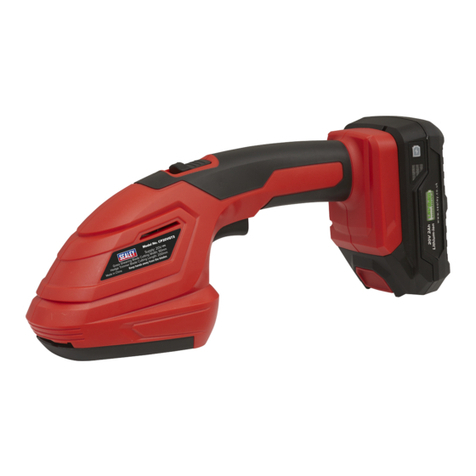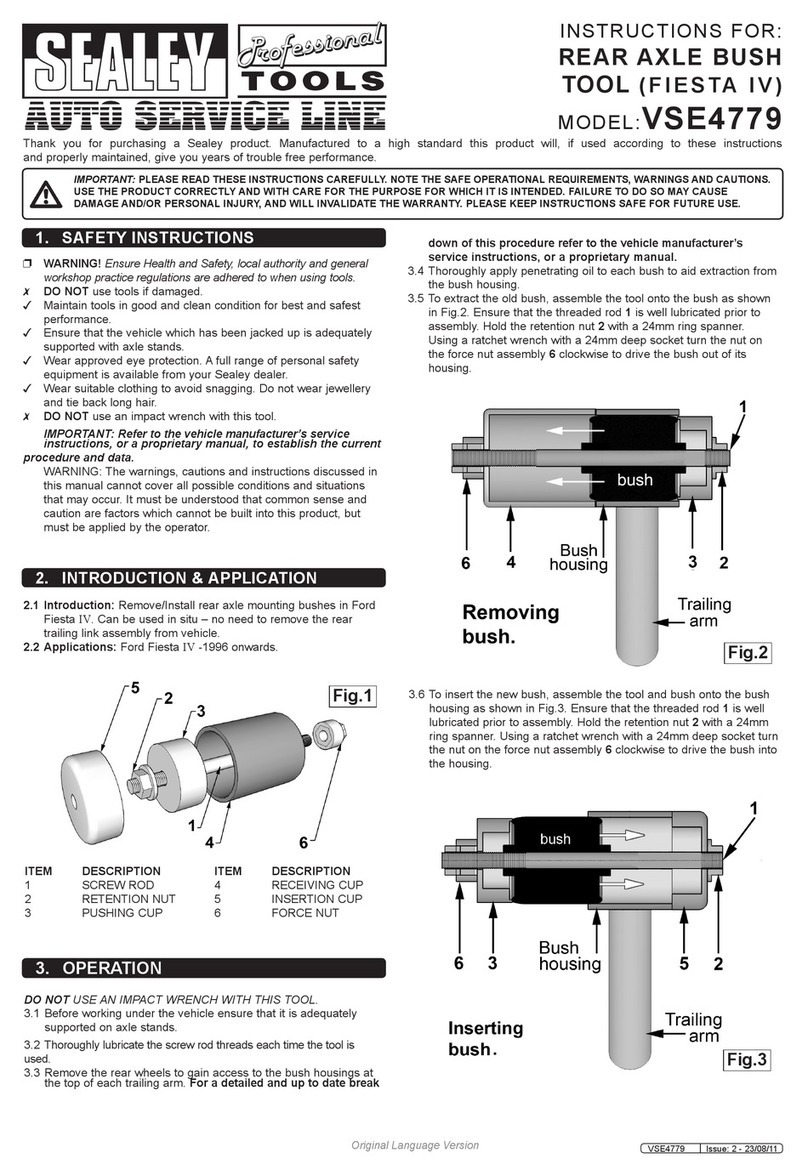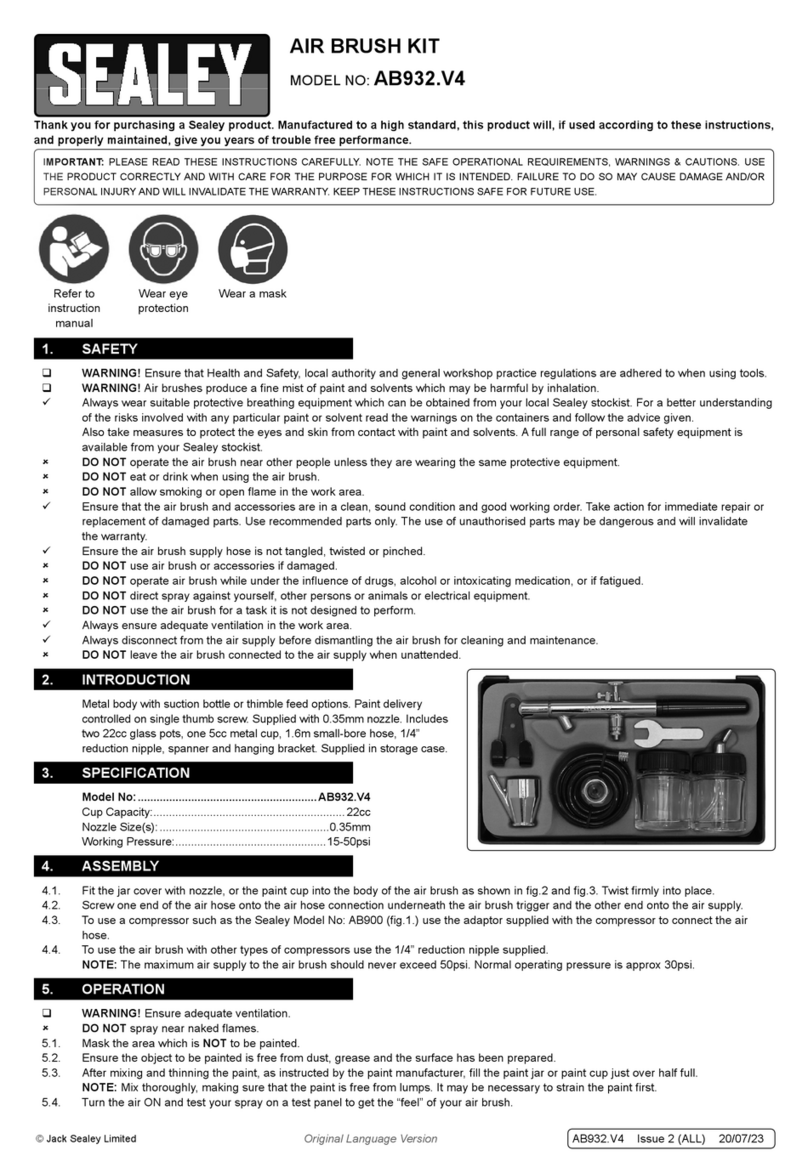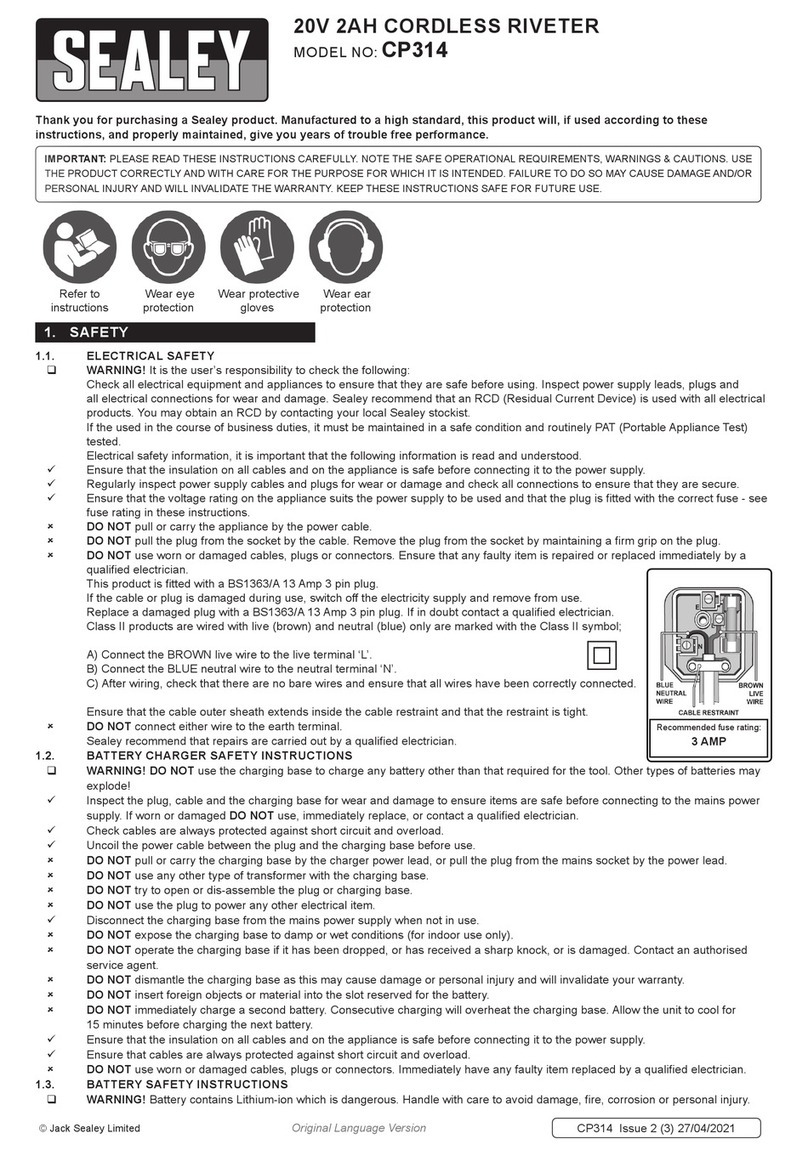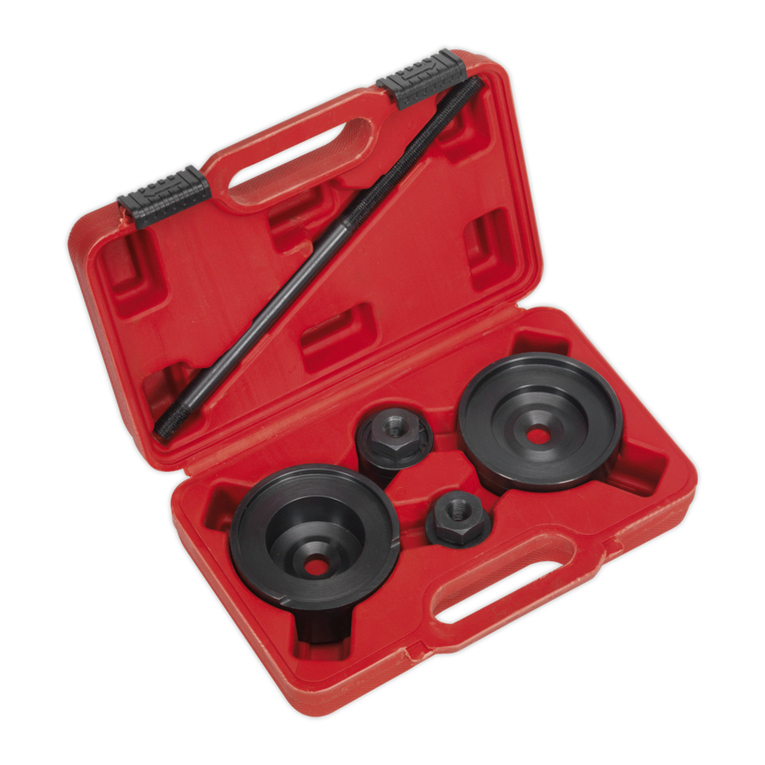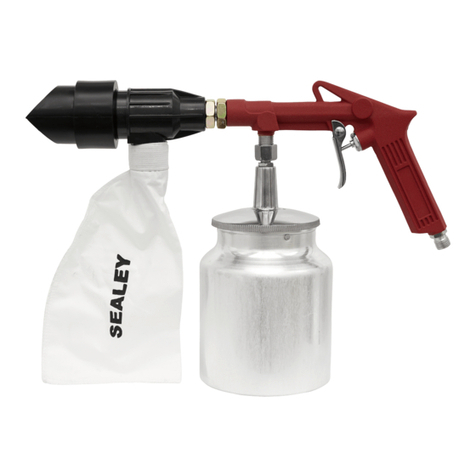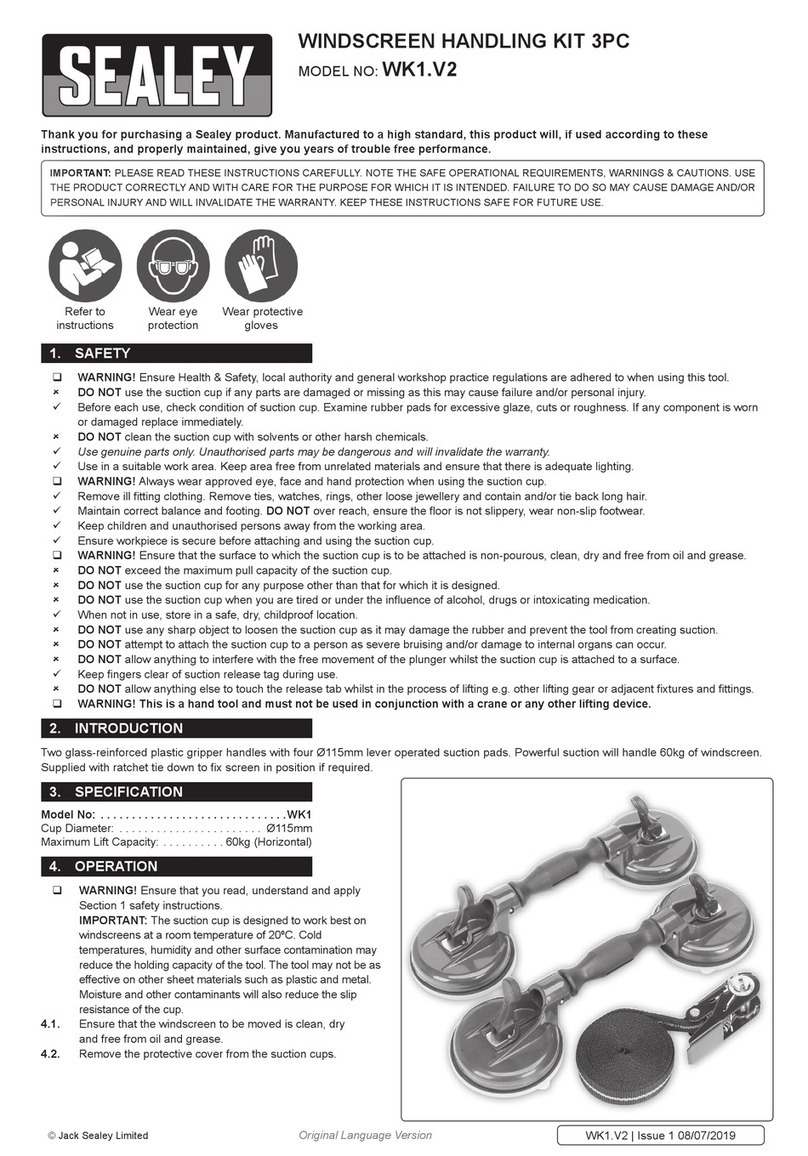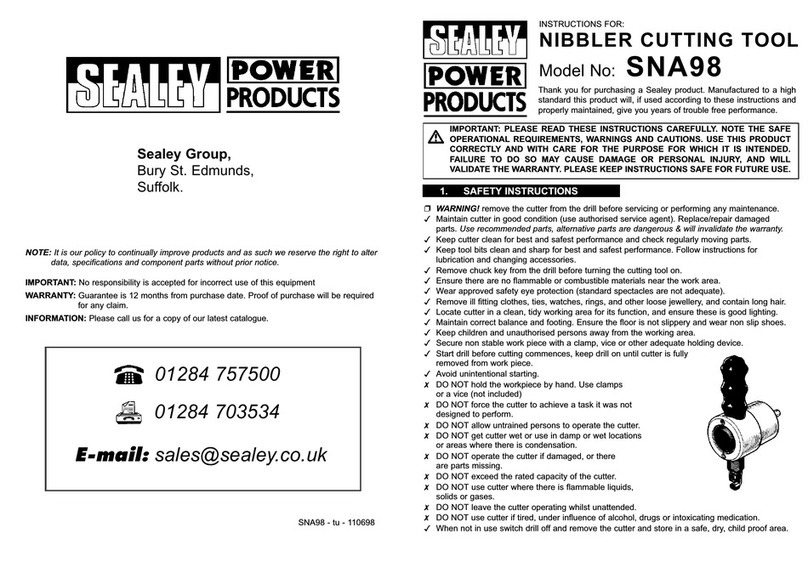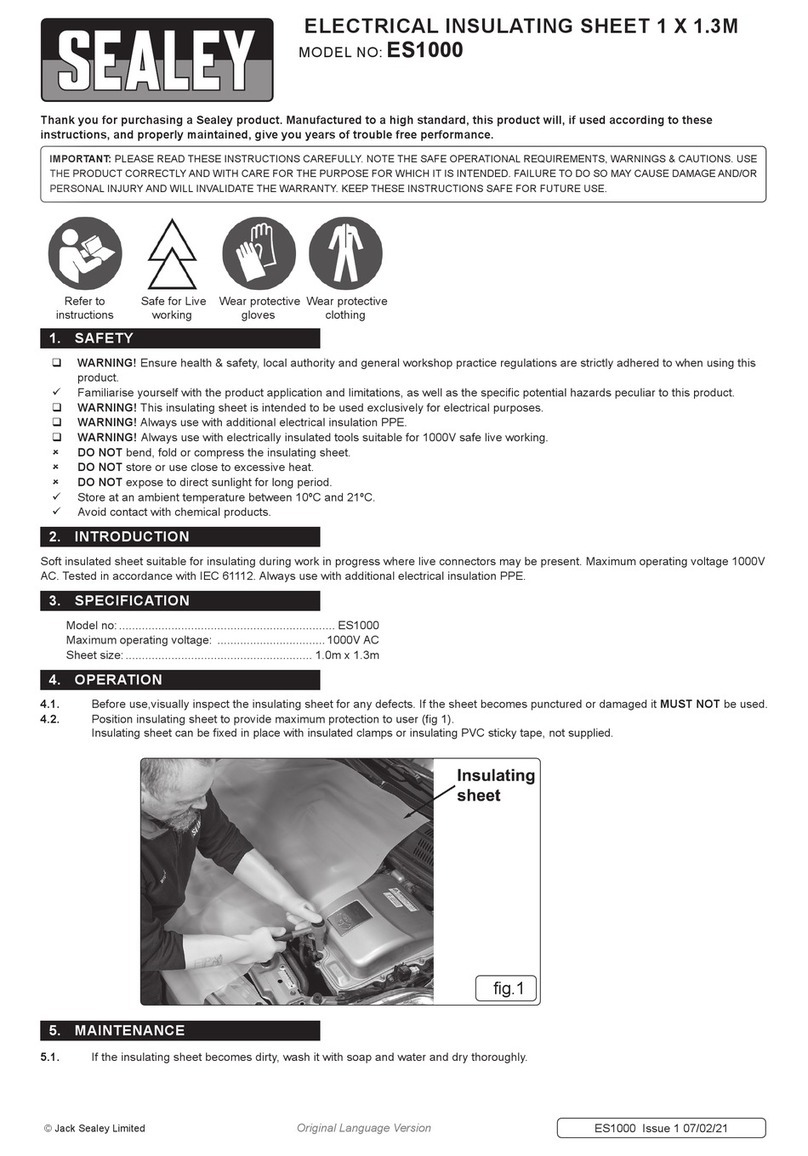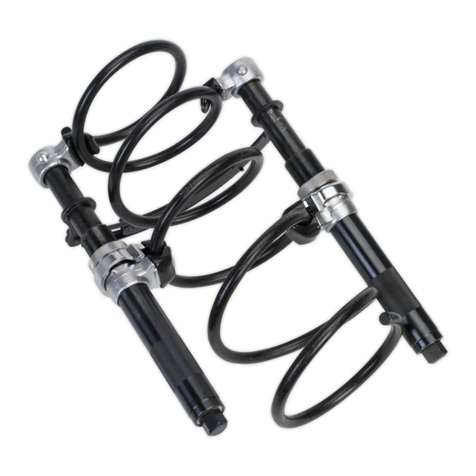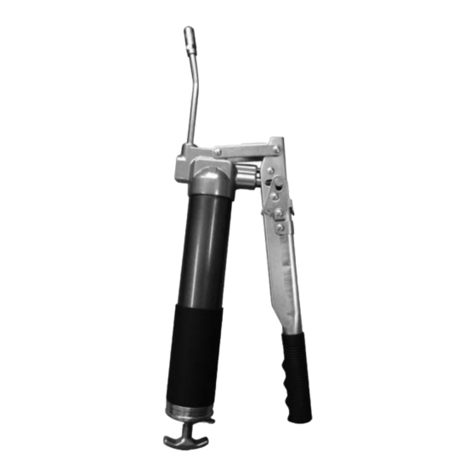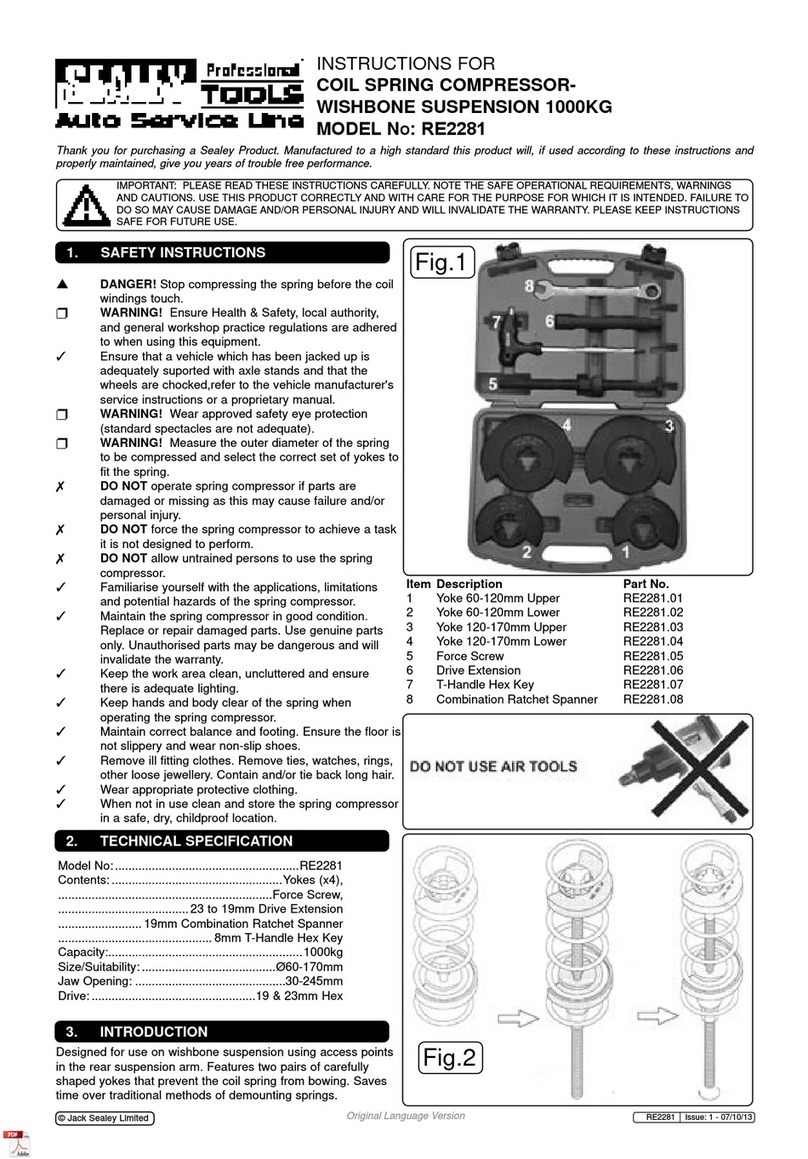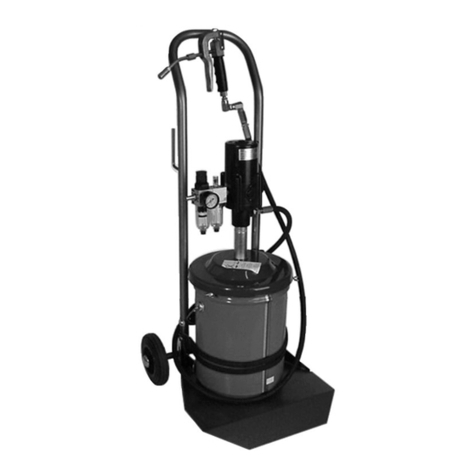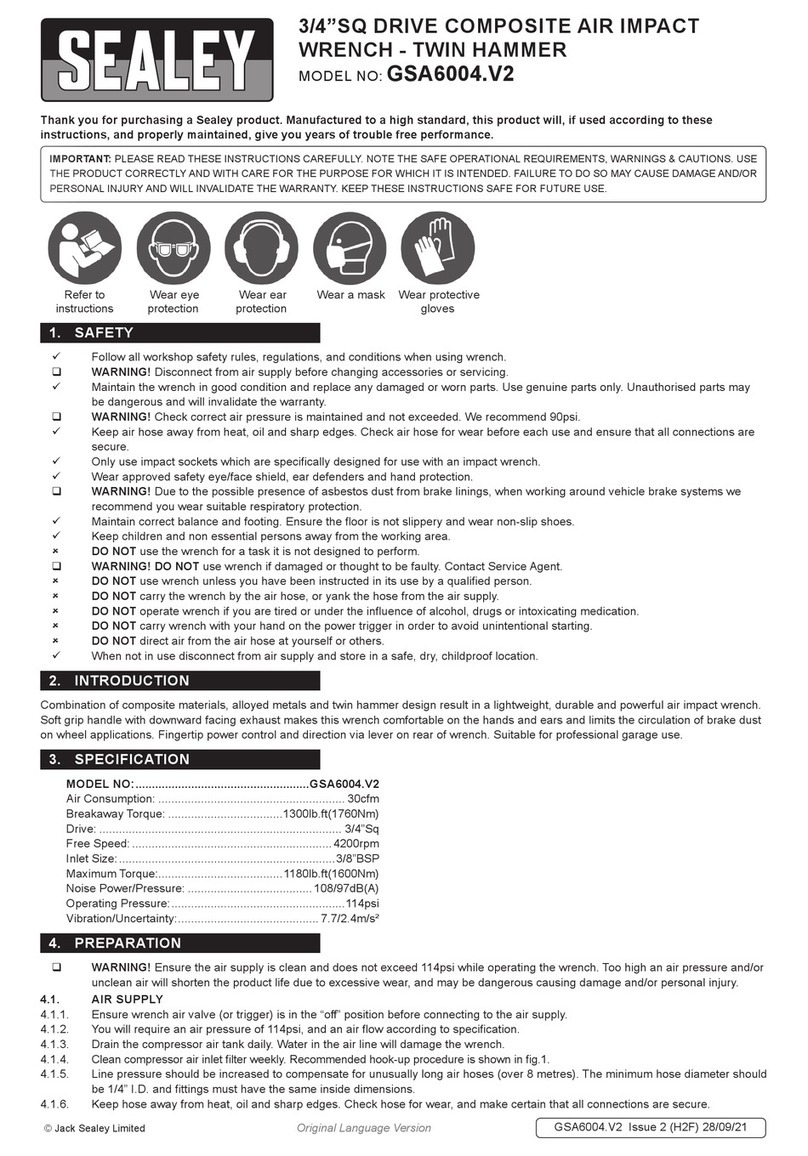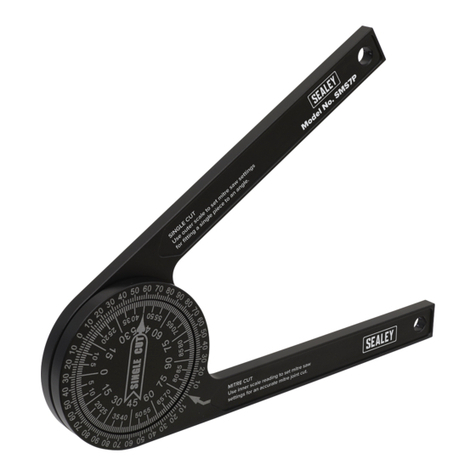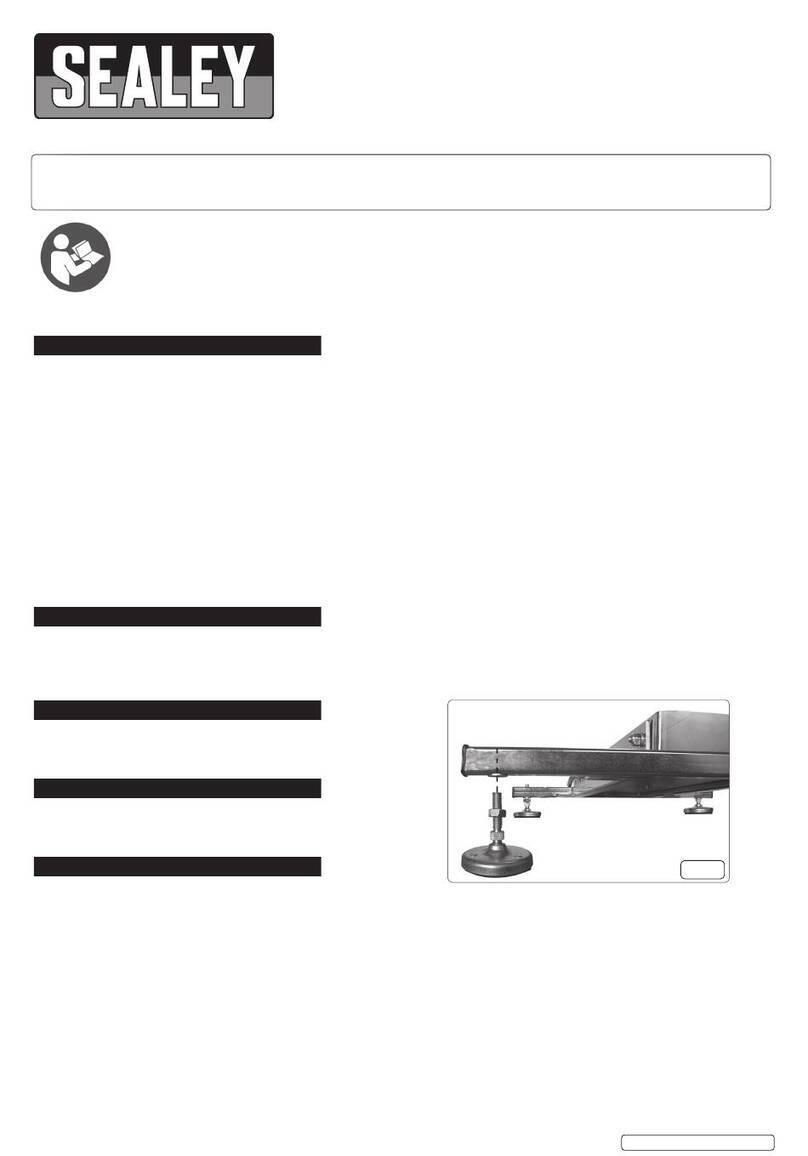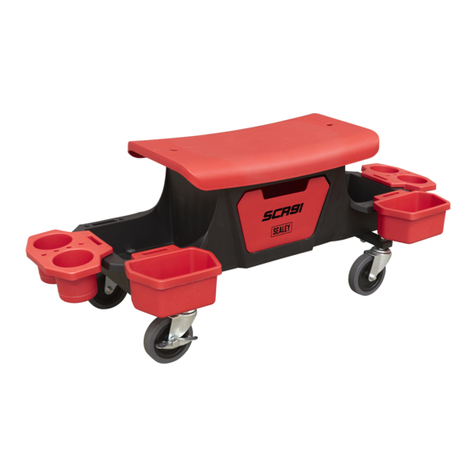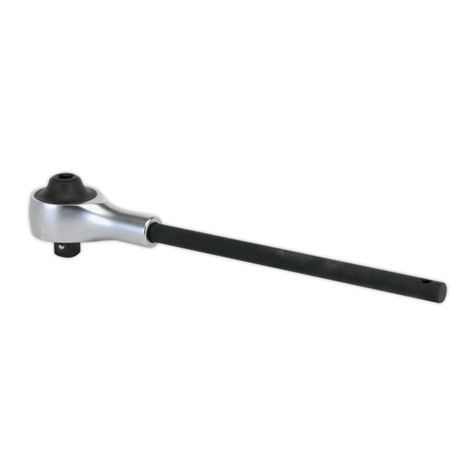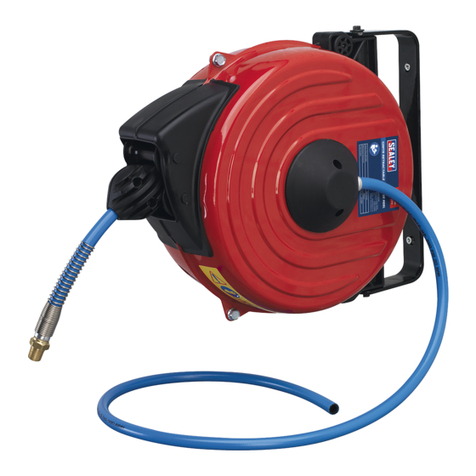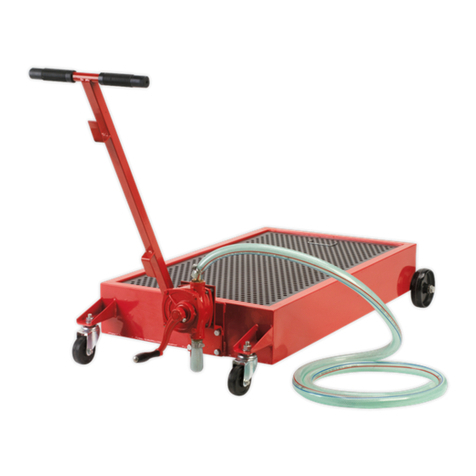3. SPECIFICATION
Note: The maximum heights shown may be extended by use of the extension pins.
4. ASSEMBLY
4.1. Attaching the Handle - YAJ15-30.V2, YAJ20-40.V2, YAJ20-40LR
4.1.1. Remove a circlip from either side of the large pin (g.1A).
4.1.2. Slide out the pin and place the handle into the opening. Slide the pin back through the jack, lining up the handle and through the
other side. Secure with circlips.
4.2. Air Hoses - YAJ15-30.V2, YAJ20-40.V2, YAJ20-40LR
4.2.1. Screw in the two air hoses from the handle into the jack.
4.2.2. The hose marked orange must be screwed into the left-hand side. The hose marked black or clear into the right-hand side, (g.1).
4.2.3. Ensure the hoses are tight and do not obstruct the movement of the handle.
5. AIR SUPPLY
5.1. Ensure that the jack pneumatic switch is in the “off” position before connecting to the air supply.
5.2. You will require an air pressure of at least 116psi (max 145psi or 174psi for YAJ20-40LR) and an air ow of 10.5cfm (or 11.5cfm for
YAJ20-40LR) to get the best performance from this jack.
RWARNING! Ensure the air supply does not exceed 145psi (or 174psi for YAJ20-40LR) while operating the jack.
Too high an air pressure and unclean air will shorten the products life due to excessive wear, and may be dangerous causing
possible damage and personal injury.
5.3. Drain the air tank daily. Water in the air line will damage the jack.
5.4. Clean the air inlet lter screen weekly.
5.5. Keep the air hose between the compressor and the air jack as short as possible, and install an air lter and oiler (g.2).
5.6. Line pressure should be increased to compensate for unusually long air hoses (over 8 metres). The minimum hose diameter should
be 3/8” I.D. and ttings must have the same inside dimensions.
5.7. Keep hose away from heat, oil and sharp edges. Check hoses for wear, and make certain that all connections are secure.
6. OPERATION
6.1. PREPARATION - YAJ15-30.V2, YAJ20-40.V2, YAJ20-40LR
6.1.1. You will require an air pressure of at least 116psi (max 145psi or 174psi for YAJ20-40LR) and an air ow of 10.5cfm or 11.5cfm for
YAJ20-40LR to get the best performance from the jack.
6.1.2. Connect the air supply to the connector (g.3B).
6.1.3. Set the handle to the required angle using the handle release lever shown in g.3A. Pull the lever upwards towards the main
handle. Move the handle to the required position and release the lever to lock it into position.
6.2. PREPARATION - YAJ15-30DC.V2, YAJ20-40DC.V2
6.2.1. Connect the air supply to the connector (g.4A).
6.2.2. To change the handle position on the “DC” models turn the handle (g.4D) anti-clockwise then pull out of socket, insert into the
other handle socket and turn clockwise to secure.
6.3. PURGE THE SYSTEM - YAJ15-30.V2, YAJ20-40.V2 AND YAJ20-40LR
6.3.1. Before using the jack, purge the hydraulic circuit in order to eliminate any possible air that may have entered the system during
transit.
6.3.2. Push the control lever (g.5A) to the ‘down’ position and hold it there for several seconds.
Model No YAJ15-30.V2 YAJ15-30DC.V2 YAJ20-40.V2 YAJ20-40DC.V2 YAJ20-40LR
Maximum
Capacity 30Tonne 30Tonne 40Tonne 40Tonne 40Tonne
Minimum
Height 175mm 150mm 175mm 150mm 190mm
Maximum Height/Capacity (mm/Tonne)
Stage 1 393/30 343/30 393/40 343/40 416/40
Stage 2 472/15 409/15 472/20 409/20 504/20
Extension 45/75mm 45/75mm 45/75mm 45/75mm 45/75mm
Chassis
Length 480mm 430mm 480mm 430mm 770mm
Length inc. Handle
Position 1 460mm 1280mm 460mm 1280mm 820mm
Position 2 1380mm 1600mm 1380mm 1600mm 1770mm
Position 3 1700mm - 1700mm - 2100mm
Width 290mm 290mm 290mm 290mm 282mm
Working
Pressure
116-
145psi
116-
145psi
116-
145psi
116-
145psi
116-
174psi
Air Flow 10.5cfm 10.5cfm 10.5cfm 10.5cfm 11.5cfm
Weight 39kg 31kg 41kg 33kg 62kg
fig.1
fig.2
YAJ15-30.V2, YAJ15-30DC.V2,YAJ20-40.V2,
YAJ20-40DC.V2, YAJ20-40LR| Issue 2 (I) 28/04/15
Original Language Version
© Jack Sealey Limited

